Netgear ReadyNAS 314 (RN31400) Review - Performance & Verdict Review
Performance & Verdict
Netgear's latest NAS is compact, fast and well built but has a couple of key flaws
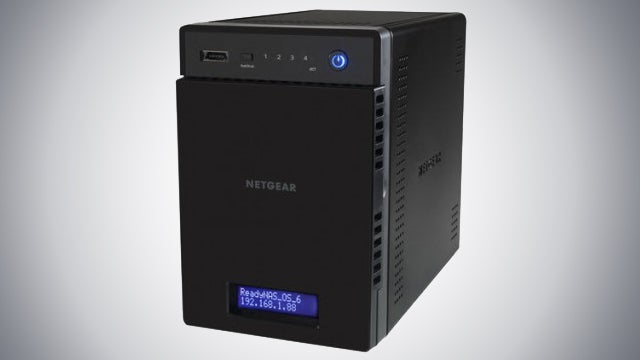
Sections
- Page 1 Netgear ReadyNAS 314 (RN31400) Review
- Page 2 Performance & Verdict Review
Netgear ReadyNAS 314 – Performance
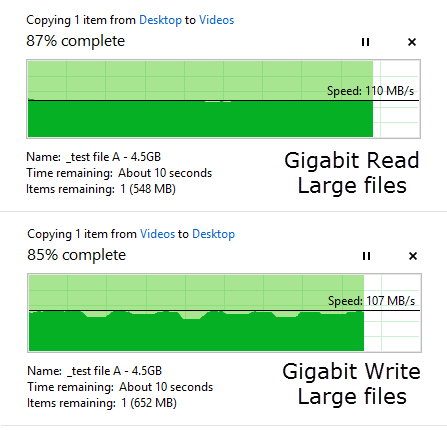 So Netgear nails the looks, the functionality and much of the setup process and usability, but is it built for speed? The answer is yes and no.
So Netgear nails the looks, the functionality and much of the setup process and usability, but is it built for speed? The answer is yes and no.
It gets a big thumbs up for large file transfers. Pulling 4GB files across the network the 314 clocked read and write speeds of 110MBps (880Mbps) and 107MBps (856Mbps) – essentially the full real world bandwidth of Gigabit Ethernet. The former is narrowly edged out by the 112MBps (896Mbps) achieved by the DS414, but the latter is the best we’ve seen coming some way ahead of the 97.3MBps (778.4Mbps) previous benchmark also set by the DS414.
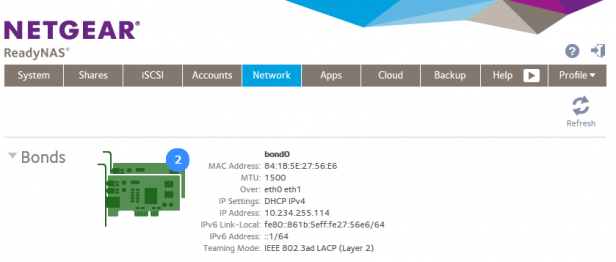
We didn’t see such exciting results from Link Aggregation. Bonding the ReadyNAS 314’s Gigabit Ethernet ports is simple, but transferring a single file saw no tangible speed jumps. We did witness roughly a 20 per cent increase in throughput when transferring multiple files, though as you’ll need to stump up over £200 for a compatible switch (we used the Netgear ProSafe GS516TP) we can’t see it being a major factor for most users. 10GE really needs to start dropping in price.
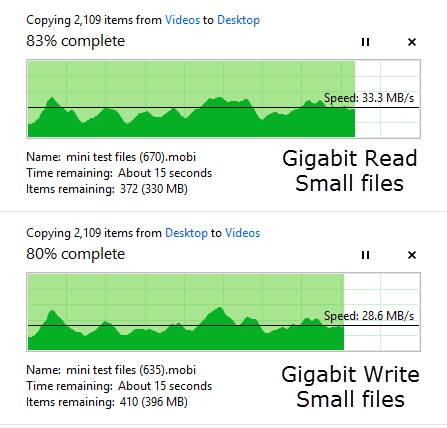 Where the 314 does lose ground against the pace setters is its handling of small files. Using our 2GB folder of over 2,000 files the ReadyNAS 314 managed average read and write speeds of 33.3MBps (266.4Mbps) and 28.6MBps (228.8Mbps). This sees it trail the DS414 (44.2MBps and 38.5MBps) as well as the Synology based ioSafe 214, though it is roughly neck and neck with the Asustor 204TE making the 314 no slouch but also no pace setter.
Where the 314 does lose ground against the pace setters is its handling of small files. Using our 2GB folder of over 2,000 files the ReadyNAS 314 managed average read and write speeds of 33.3MBps (266.4Mbps) and 28.6MBps (228.8Mbps). This sees it trail the DS414 (44.2MBps and 38.5MBps) as well as the Synology based ioSafe 214, though it is roughly neck and neck with the Asustor 204TE making the 314 no slouch but also no pace setter.
Lastly we come to volume and here we did find the ReadyNAS 314 disappoints. The single small-ish 92mm fan raised concerns on paper (the general rule is the larger the fan the slower it needs to spin to generate the same cooling) and those concerns were realised. Fully populated the ReadyNAS 314 records a noisy 40-42db at one metre which is enough for it to always be noticeable in a quiet room. Using the same drives (WD Red 4TB) pack leaders the DS414, DS214 and WD MyCloud range from 25-30db which crucially keeps them largely inaudible.
It must be said, noise is an ongoing problem for Netgear. The otherwise excellent two bay ReadyNAS 102 reached 30-35db in our tests which is also noisier than these four bay models. 120mm fans next time please.
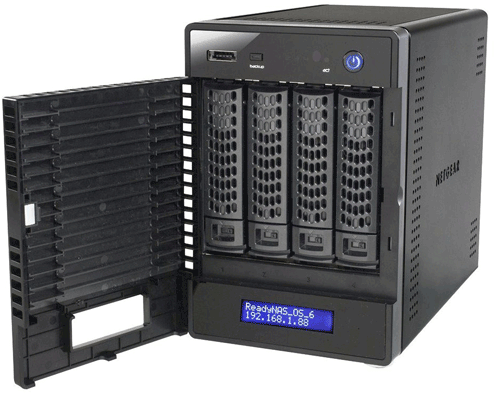
Should I buy the Netgear ReadyNAS 314?
There are a great many reasons you should open your wallet and snap up the ReadyNAS 314. It is extremely compact, very well-built, easy to setup and fast – particularly for large sequential file transfers. In averaging £419 online (unpopulated) it is also good value.
The problem is this combination isn’t quite enough against our current pacesetter, the Synology DS414. The ReadyNAS 314 is better built and edges it on overall speeds for large file transfers, but the DS414 is much quicker at the smaller file transfers you’re more likely to do regularly, its setup and software is even slicker, it is much quieter and from £350 unpopulated it is significantly cheaper.
Verdict
The Netgear ReadyNAS 314 does just about everything well and its build quality, functionality and large file transfer speeds are all class leading. However, its small-file transfer speed, noise and pricing leave it trailing just behind our favourite 4-bay NAS, the Synology DS414.
Trusted Score
Score in detail
-
Performance 8
-
Value 7
-
Features 9
-
Build Quality 9
-
Usability 8
-
Design 8

